Papers by Christophe Ferrari
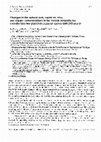
Journal de physique, May 1, 2003
We present new ice core records showing the temporal variation in the natural Pb, Cd, Zn, and Cu ... more We present new ice core records showing the temporal variation in the natural Pb, Cd, Zn, and Cu concentrations in the Vostok Antarctic ice over the past 240, 000 years. Our data show that concentrations of these heavy metals have varied remarkably over the last two glacial-interglacial cycles. The concentrations ranged from 0. 9 to 21. 3, 0. 04 to 0. 62, 3. 12 to 126, and 2. 27 to 37. 4 pglg for Pb, Cd, Zn, and Cu, respectively. These profiles provide a better understanding of climate-rejated variation in the occurrence of these heavy metals in ancient Antarctic ice. The concentrations were much higher during cold glacial periods than during interglacials, and peaked at the coldest glacial stages. The contribution of rock and soil dust is estimated to be close to the measured concentrations of Pb, Zn, and Cu, but not Cd, in the ice during cold glacial periods.
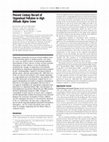
Environmental Science & Technology, Nov 10, 1999
Organolead compounds are tracers of lead additives used as anti-knocking agents in leaded gasolin... more Organolead compounds are tracers of lead additives used as anti-knocking agents in leaded gasoline, and snow/ ice cores are useful archives of environmental pollution. Determination of these species in those archives provides information on their influence on the Pb pollution by monitoring the changes of organolead concentrations during the years. Organolead compounds have been analyzed by gas chromatography coupled to microwave-induced plasma atomic emission spectrometry (GC-MIP-AES) in a series of snow pit and snow/ice core samples deposited in a high altitude site in the Mont Blanc area between 1956 and 1994. Measured concentrations ranged from 0.1 to 3 pg/g for dimethyllead, from 0.08 to 3.4 pg/g for trimethyllead, from 0.01 to 0.57 pg/g for diethyllead, and from 0.01 to 0.13 pg/g for triethyllead. No organolead compounds were detected in ice deposited before 1962. Concentrations of total alkyllead increased from 1962 till the late 1980s but then declined significantly during the 1990s. Changes in consumption of these species in France were compared with the obtained data. A delay of several years was observed between the restricted consumption of these additives and the subsequent decrease in concentrations observed in the ice. Furthermore, the data were compared with two records for organolead pollution obtained for the Northern Hemisphere: one for Central Greenland snow and the other for vintages originating from the Rho ˆne Valley in southeast France.
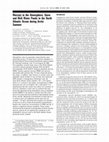
Environmental Science & Technology, Jun 2, 2006
Atmospheric mercury speciation measurements were performed during a 10 week Arctic summer expedit... more Atmospheric mercury speciation measurements were performed during a 10 week Arctic summer expedition in the North Atlantic Ocean onboard the German research vessel RV Polarstern between June 15 and August 29, 2004. This expedition covered large areas of the North Atlantic and Arctic Oceans between latitudes 54°N and 85°N and longitudes 16°W and16°E. Gaseous elemental mercury (GEM), reactive gaseous mercury (RGM) and mercury associated with particles (Hg-P) were measured during this study. In addition, total mercury in surface snow and meltwater ponds located on sea ice floes was measured. GEM showed a homogeneous distribution over the open North Atlantic Ocean (median 1.53 ( 0.12 ng/m 3 ), which is in contrast to the higher concentrations of GEM observed over sea ice (median 1.82 ( 0.24 ng/m 3 ). It is hypothesized that this results from either (re-) emission of mercury contained in snow and ice surfaces that was previously deposited during atmospheric mercury depletion events (AMDE) in the spring or evasion from the ocean due to increased reduction potential at high latitudes during Arctic summer. Measured concentrations of total mercury in surface snow and meltwater ponds were low (all samples <10 ng/L), indicating that marginal accumulation of mercury occurs in these environmental compartments. Results also reveal low concentrations of RGM and Hg-P without a significant diurnal variability. These results indicate that the production and deposition of these reactive mercury species do not significantly contribute to the atmospheric mercury cycle in the North Atlantic Ocean during the Arctic summer.

La deterioration de la qualite de l'air est attribuee a un accroissement des emissions des so... more La deterioration de la qualite de l'air est attribuee a un accroissement des emissions des sources mobiles. L'utilisation de nouveaux carburants d'origine vegetale est testee sur les flottes de transports en commun afin de reduire ces emissions polluantes. Une comparaison des emissions entre d'une part le gazole et d'autre part un melange compose de gazole et d'esters methyliques provenant de l'huile de colza est realisee. Cette comparaison a porte sur les composes organiques volatils types alcanes, alcenes, alcynes, aromatiques, sur les aldehydes ainsi que sur les hydrocarbures aromatiques polycycliques et les particules. A cette occasion, il a ete mis en evidence des molecules specifiquement emises par ce biocarburant. Ces dernieres sont des esters methyliques a courtes chaines (de trois a six atomes de carbone). Ces composes ont fait l'objet d'etudes sur leurs interactions avec le radical hydroxyle. Leurs temps de vie dans la troposphere ont ete determines
HAL (Le Centre pour la Communication Scientifique Directe), Feb 22, 2005
Poste

AGU Fall Meeting Abstracts, Dec 1, 2009
ABSTRACT Mercury (Hg) is an extremely toxic pollutant, and its biogeochemical cycle has been pert... more ABSTRACT Mercury (Hg) is an extremely toxic pollutant, and its biogeochemical cycle has been perturbed by anthropogenic emissions during recent centuries. In the atmosphere, gaseous elemental mercury (GEM; Hg°) is the predominant form of mercury (up to 95%). GEM concentrations measured in the interstitial air of the firn (unconsolidated snow) at Summit (central Greenland) enabled reconstruction of the atmospheric history of this species in mid- to high-northern latitudes back to the twentieth century. GEM concentrations increased rapidly after World War II from ~1.5 ng m-3 reaching a maximum of ~3 ng m-3 around 1970 and decreased until stabilizing at ~1.7 ng m-3 around 1995. This reconstruction reproduces real-time measurements available from the Arctic since 1995 and exhibits the same general trend observed in Europe since 1990. Anthropogenic emissions caused a two-fold rise in boreal atmospheric GEM concentrations before the 1970s, which likely contributed to higher deposition of mercury in both industrialized and remotes areas. Once deposited, this toxin becomes available for methylation and, subsequently, the contamination of ecosystems. Implementation of air pollution regulations, however, enabled a large-scale decline in atmospheric mercury levels during the 1980s. Our results suggest that potential increases in emissions in the coming decades could have a similar large-scale impact on atmospheric Hg levels.
EGS - AGU - EUG Joint Assembly, Apr 1, 2003
Recent scientific developments have shown increased evidence that the natural cycle of iron in th... more Recent scientific developments have shown increased evidence that the natural cycle of iron in the Southern Ocean might play a fundamental role in regulating ocean productivity and as a consequence, the climate. Martin (1990) extended the iron-limitation hypothesis to suggest that iron may have been more available to Southern Ocean phytoplankton during glacial times. To study the variability of iron

Pollution atmosphérique, 2000
En 199 7, le ministère de l'Aménagement du Territoire et de l'Environn ement et l'Agen ce de l'en... more En 199 7, le ministère de l'Aménagement du Territoire et de l'Environn ement et l'Agen ce de l'environn ement et de la maîtrise de l'énergie (ADEME) ont command é au Laboratoire de Glaciolog ie et Géophysiqu e de l'En vironn ement de Grenob le (LGGE)' (CNRS) une étude visant à évaluer les dépôts de métaux lourds dans les Alpes françaises en utilisant le manteau neigeux saisonnier comme piège de ces polluants pour les hivers 1997 -1998 et 199 8-1999 , La neige est en effet un support intéressant ca r elle ne permet pas d'inter action chimique avec les métaux. Contrairement aux mousses, ce support a donc l'avantage de permettre la détermination du dépôt réel de ces métaux, param ètre indispensabl e pour évaluer ultérieurement les niveaux supérieurs aux char ges critiques . Le domaine d'étude a été délimité au massif alpin, car il fallait trouver un domaine de montagne où l'on avait des altitudes suffisamment élevées (» 1 500 m) pour obteni r un manteau neigeux conséquent pendant une assez longue période. De plus, la région Rhône-Alpes est dotée de vallées fortement industrialisées. avec un fort trafic routier, ce qui va nous permettre de su ivre , entre autres, des polluants traceurs ainsi que leur répartition spatiale, et les niveaux de con tamination des Alpes. L'étendue du domaine d'étude a, en revanche, été établie selon des critères pratiques. L'intégralité du massif alpin français n'était pas gérable, même avec l'aide des parcs nationaux, régionaux et des réserves natur elles. Nous avons donc préféré mettre l'accent sur des analyses et interprétations plus poussées au sein de chaque massif plutôt que sur une plus grande quantit é de maille s et donc d'échanti llons. Dans cet article est présentée toute la méthodologie mise en place pour le choi x des sites, les prélèvements, les analyses . Des premiers résultats sont prése ntés sur ce rtains massifs.
Science of The Total Environment, 2005
During a field experiment at Kuujjuarapik/Whapmagoostui (55.31 degrees N, 77.75 degrees W), Quebe... more During a field experiment at Kuujjuarapik/Whapmagoostui (55.31 degrees N, 77.75 degrees W), Quebec, we observed increases of concentrations of particles with diameters larger than 0.3 microm in the ambient air during a nighttime atmospheric mercury depletion event (AMDE). These increases were strongly correlated with decreases of ozone and atmospheric mercury, and we also observed a change in the particle size distribution during this AMDE. Assuming that these phenomena imply either a chemical link or an association through transport, we also studied the nature of this AMDE. We hypothesize that the observed AMDE was a result of an influx of already depleted air masses and that it was not a product of local chemical reactions.

International Journal of Chemical Kinetics, 1996
The rate constants of the isopropyl acetate, n-propyl acetate, isopropenyl acetate, n-propenyl ac... more The rate constants of the isopropyl acetate, n-propyl acetate, isopropenyl acetate, n-propenyl acetate, n-butyl acetate, and ethyl butyrate reactions with OH radicals were determined in purified air under atmospheric conditions, at 750 torr and (295 ± 2) K. A relative rate experimental method was used; n-heptane, n-octane, and n-nonane were the reference compounds, with, respectively, rate constants for the reaction with OH of 7.12 × 10−12, 8.42 × 10−12, and 9.70 × 10−12 molecule−1 cm3s−1. The following rate constants were obtained in units of 10−12 molecule−1 cm3s−1; isopropyl acetate, (3.12 ± 0.29); n-propyl acetate, (1.97 ± 0.24); isopropenyl acetate, (62.53 ± 1.24); n-propenyl acetate, (24.57 ± 0.24); n-butyl acetate, (3.29 ± 0.35); and ethyl butyrate, (4.37 ± 0.42). Tertiary butyl acetate has a low reactivity with OH radicals (<1 × 10−12 molecule−1 cm3s−1). © 1996 John Wiley & Sons, Inc.
Atmospheric Environment, 2000
ABSTRACT
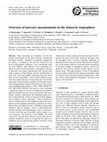
Atmospheric Chemistry and Physics, Apr 7, 2010
Polar ecosystems are considered to be the last pristine environments of the earth relatively unin... more Polar ecosystems are considered to be the last pristine environments of the earth relatively uninfluenced by human activities. Antarctica in particular, compared to the Arctic is considered to be even less affected by any kind of anthropogenic influences. Once contaminants reach the Polar Regions, their lifetime in the troposphere depends on local removal processes. Atmospheric mercury, in particular, has unique characteristics that include longrange transport to Polar Regions and the transformation to more toxic and water-soluble compounds that may potentially become bioavailable. These chemical-physical properties have placed mercury on the priority list of an increasing number of International, European and National conventions, and agreements, aimed at the protection of the ecosystems including human health (i.e. GEO, UNEP, AMAP, UN-ECE, HELCOM, OSPAR). This interest, in turn, stimulates a significant amount of research including measurements of gaseous elemental mercury reaction rate constant with atmospheric oxidants, experimental and modelling studies in order to understand the cycling of mercury in Polar Regions, and its impact to these ecosystems. Special attention in terms of contamination of Polar Regions is paid to the consequences of the springtime phenomena, referred to as "Atmospheric Mercury Depletion Events" (AMDEs), during which elemental mercury through a series of photochemicallyinitiated reactions involving halogens, may be converted to a reactive form that may accumulate in polar coastal, or sea ice, ecosystems. The discovery of the AMDEs, first noted in the Arctic, has also been observed at both poles and was initially considered to result in an important net input of atmospheric mercury into the polar surfaces. However, recent
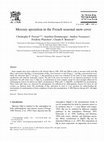
Science of The Total Environment, Mar 1, 2002
Snow samples have been collected in the French Alps in 1998Alps in , 1999Alps in and 2000 in orde... more Snow samples have been collected in the French Alps in 1998Alps in , 1999Alps in and 2000 in order to measure both total Hg Ž . Ž . Hg and reactive Hg Hg . Concentrations of Hg were between 13 and 130 pg g and Hg concentrations were T R T R Ž y1 . below the detection limit ; 0.8 pg g . Hg speciation in snow was evaluated on the basis of ionic complexation equilibrium with chloride, hydroxide, oxalate. The pH of the snow was found to be an important parameter for Hg speciation. For pH values near 3, HgC O is predominant in snow samples except for snow strongly influenced by 2 4 . Ž. anthropogenic sources in which case HgCl predominates . When pH) 4, Hg OH and HgOHCl are predominant. 2 2 These latter pH values are observed for precipitation not influenced by anthropogenic sources but more by soil erosion, e.g. Saharan dusts. The knowledge of Hg speciation in snow is a key question for understanding the r mechanisms of transformation of these complexes in snow after precipitation.
Geochimica et Cosmochimica Acta, Feb 1, 2003
... that took place in the 1960s and more than 150 km from the open ocean or any ... concentratio... more ... that took place in the 1960s and more than 150 km from the open ocean or any ... concentrations (0.1 pg/g) in some 1990s samples results in large uncertainties in the isotopic ratios making ... It can be anticipated that a significant fraction of lead in pre-1880s samples (time period 1 ...

HAL (Le Centre pour la Communication Scientifique Directe), Jun 15, 2009
International audienceMercury (Hg), a persistent and toxic element, is found both naturally and a... more International audienceMercury (Hg), a persistent and toxic element, is found both naturally and as an anthropogenically-produced compound in the environment. Industrial use of Hg, and its subsequent release to the environment, has contributed to increasing Hg levels in soil, sediments and aquatic ecosystems worldwide. The Arctic is at risk for Hg toxicity. This is particularly the case for coastal sites, which appear to be involved in Hg cycling. The role of micro-organisms in the biogeochemical Hg cycle has recently become the focus of a large number of studies. The inorganic form of Hg, HgII, can be reduced to the relatively inert gaseous elemental mercury (GEM) form by bacteria possessing the mer operon. Bacteria, such as sulphate or iron reducers, are also reported to mediate the transformation of HgII to the more toxic and bioaccumulative organic form, methyl mercury (MeHg). However, the extent to which bacterial populations interact with mercury remains to be elucidated, especially in polar ecosystems. In order to understand how microbial populations respond to mercury, we used a metagenomic approach to describe both community structure and gene function variations in the Arctic snow pack over a two-month period during the spring of 2008 in Ny-Alesund, Svalbard, Norway. Using taxonomic DNA microarrays, a high throughput molecular biology technique, we monitored the evolution of bacterial communities within the snowpack. Community structure was then correlated to environmental factors and mercury concentrations. Gene function was analyzed by pyrosequencing as well as Q-PCR. The potential interdependence of the microbial community controlled mercury transformations and the community structure could provide insights into mercury cycling in the Arctic. In addition, the role of mercury resistant bacteria in the survival of the entire microbial community can be induced by the correlation between community members and mercury functional genes

Geophysical Research Letters, Oct 21, 2006
[1] In the paper ‘‘Fast depletion of gaseous mercury in the Kongsvegen Glacier snowpack in Svalba... more [1] In the paper ‘‘Fast depletion of gaseous mercury in the Kongsvegen Glacier snowpack in Svalbard’’ by Xavier Fain et al. (Geophysical Research Letters, L06826, doi:10.1029/2005GL025223, 2006), an error has been pointed out in the calculation of GEM lifetimes and derived kinetic constants. Table 1 presents the corrected data. [2] The calculated lifetime of GEM in the Snowpack Interstitial Air (SIA) of Kongsvegen Glacier has been evaluated to about 3.5 hours, which is close to the lifetime of GEM observed during Atmospheric Mercury Depletion Events (AMDE) [see, e.g., Skov et al., 2004; Gauchard et al., 2005]. The SIA seems to be affected by GEM oxidation which can lead to GEM depletion with concentrations as low as 0.4 ng.m 3 close to the surface instead of 1.7 ng/m in the atmosphere above the snow. This interstitial air event is similar to AMDE and could then be so-called Interstitial Air Mercury Depletion Event (IAMDE). Finally, AMDE and IAMDE could exist independently as observed in this study, even if the chemical processes involved in both phenomenon could be the same.
Atmospheric Environment, Mar 1, 2006











Uploads
Papers by Christophe Ferrari